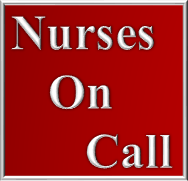If you’re a nurse looking to advance your career, you may have encountered the challenges of licensure and certification hurdles in the profession. However, fear not, because Nurses On Call is here to help. With over 25 years of experience in nurse staffing, Nurses On Call is dedicated to matching their experienced RNs and LPNs to facility needs, on a temporary or semi-permanent basis. They provide 24/7 on-call service, local support staff, and even an on-site Director of Nursing for a seamless experience. With a commitment to addressing licensure and certification hurdles, Nurses On Call is your go-to agency to take your nursing career to new heights. Give them a call today at 850-474-9803 and see how they can assist you!
Defining Licensure and Certification
Licensure and certification are both important processes in the field of nursing that validate a nurse’s competence and skills. While the terms are often used interchangeably, there are distinct differences between the two.
Licensure refers to the legal authorization granted by a government agency, typically a state board of nursing, which allows an individual to practice as a registered nurse (RN) or licensed practical nurse (LPN). It is a mandatory requirement that ensures nurses meet the minimum standards set by the regulatory body. Licensure involves passing a standardized examination, such as the National Council Licensure Examination (NCLEX), which assesses the nurse’s knowledge and ability to provide safe and effective care.
On the other hand, certification is a voluntary process that demonstrates a nurse’s specialized knowledge and expertise in a particular area of nursing practice. It is typically offered by professional nursing organizations and requires the completion of specific educational requirements and a comprehensive examination. Examples of nursing certifications include Certified Pediatric Nurse (CPN), Certified Emergency Nurse (CEN), and Certified Nurse Educator (CNE).
Both licensure and certification play crucial roles in ensuring quality patient care and professional accountability in the nursing profession.
Importance of Licensure and Certification in Nursing
Licensure and certification hold great significance in the nursing profession for various reasons. Firstly, they ensure that nurses possess the necessary knowledge and skills to provide safe and competent care to patients. By meeting the requirements set by licensing boards and certifying organizations, nurses demonstrate their commitment to maintaining high standards of practice.
Secondly, licensure and certification provide a level of credibility and professional recognition. Being licensed and certified enhances a nurse’s resume and validates their expertise, making them more marketable to employers. Many healthcare institutions prioritize hiring nurses who hold relevant certifications, as it demonstrates their commitment to specialized knowledge and ongoing professional development.
Lastly, licensure and certification offer protection to the public. By regulating the nursing profession and holding nurses accountable to a set of standards, licensure ensures that only qualified individuals are allowed to practice nursing. It gives patients and their families the confidence that they are receiving care from a competent and qualified professional.
Current Challenges in Licensure and Certification
While licensure and certification are crucial aspects of nursing practice, they are not without their challenges. Several factors contribute to the complexity and difficulties associated with these processes.
One of the prominent challenges is the complexity of licensure and certification processes. The application requirements, documentation, and examination processes can be overwhelming for many nurses, especially those who are unfamiliar with the system. Navigating through various forms and understanding the specific requirements for each state or organization can be time-consuming and confusing.
Another challenge is the varying requirements across states. Each state has its own set of regulations and criteria for licensure and certification. This lack of standardization adds to the complexity for nurses who wish to practice in multiple states or relocate. Nurses often have to go through additional paperwork, examinations, or even educational requirements to meet the specific criteria of each state, leading to delays and barriers in their practice.
Foreign-trained nurses face unique challenges in obtaining licensure and certification in the United States. The process of having their international qualifications recognized and evaluated can be complex and time-consuming. Language and cultural barriers may further hinder their ability to navigate the system, making it difficult for them to join the U.S. nursing workforce.
The cost and time commitment involved in obtaining and maintaining licensure and certification also pose challenges for many nurses. The fees associated with application, examination, and renewal can be significant, particularly for those holding multiple certifications. Additionally, nurses must allocate time for studying, attending continuing education courses, and meeting the requirements for license renewal, which can be burdensome, especially for those working full-time.
Impact on Nursing Workforce
The challenges associated with licensure and certification have significant implications for the nursing workforce. Limited mobility and restricted practice potential are two key issues faced by nurses due to variations in licensure requirements across states. Nurses often find it difficult to transfer their licenses to different states, which limits their ability to pursue career opportunities or respond to workforce demands in different regions. This lack of mobility can also result in a stagnant job market, as qualified nurses may be hesitant to relocate due to the hurdles associated with obtaining a new license.
Moreover, the complexity of licensure and certification processes can create barriers to career advancement. Nurses who wish to specialize or pursue advanced practice roles may face additional requirements and examinations. These barriers can hinder their professional growth and limit their ability to explore higher-level nursing positions.
The impact of licensure and certification challenges is not limited to individual nurses but also affects the job market and contributes to staffing shortages. The inability to easily transfer licenses between states creates imbalances in the distribution of nurses across regions, leading to disparities in the availability of healthcare services. Furthermore, the time and financial commitments required for obtaining licensure and certification may discourage potential nurses from entering the profession, exacerbating the shortage of healthcare professionals.
Efforts to Streamline Licensure and Certification Processes
Recognizing the challenges faced by nurses in licensure and certification processes, various efforts have been made to streamline and improve the system. Several organizations and initiatives are working towards simplifying and standardizing these processes, making it easier for nurses to navigate and obtain the necessary credentials.
The National Council of State Boards of Nursing (NCSBN) plays a crucial role in promoting uniformity and consistency in nursing regulation. It develops and administers the NCLEX examination and collaborates with state boards of nursing to establish guidelines and standards. The NCSBN’s efforts focus on creating efficient licensure processes and enhancing the portability of nursing licenses between states.
The Enhanced Nurse Licensure Compact (eNLC) is another initiative aimed at facilitating nursing mobility across states. It allows nurses from compact states to practice in other compact states without having to obtain additional licenses. The eNLC helps address the issue of limited mobility by allowing nurses to practice across state lines more easily, thereby increasing access to nursing care.
The Nurse Licensure Compact Commission (NLCC) oversees the implementation and coordination of the eNLC. It works closely with state nursing boards to ensure compliance with the regulations and standards established by the compact. The NLCC also provides resources and support to nurses seeking licensure in compact states.
Increased reciprocity agreements between states have also been established to simplify licensure processes. These agreements enable nurses who hold licenses in one state to obtain licenses in another state without having to repeat the entire application and examination process. Reciprocity agreements promote the mobility of nurses and facilitate their participation in the workforce.
Efforts are also underway to standardize application requirements and processes. By establishing common criteria and documentation requirements, nursing organizations and regulatory bodies aim to reduce confusion and simplify the application process for nurses. Standardization can help minimize the discrepancies in licensure and certification processes and make them more accessible and understandable for all.
Supporting Foreign-Trained Nurses
recognizing the valuable contribution of foreign-trained nurses to the U.S. healthcare system, various measures have been implemented to support their integration into the workforce. These initiatives aim to address the unique challenges faced by foreign-trained nurses and facilitate their transition into the U.S. nursing practice.
One of the key aspects is the recognition of international qualifications. Organizations like the Commission on Graduates of Foreign Nursing Schools (CGFNS) evaluate and verify the educational qualifications and credentials of foreign-trained nurses. Through their credential evaluation services, they assist nurses in understanding the equivalency of their education and facilitating the licensure process.
Assistance programs are available to support foreign-trained nurses in the process of obtaining licensure and certification. These programs provide guidance, resources, and step-by-step instructions to help nurses navigate through the complex system. They offer workshops, webinars, and personalized support to address the unique challenges faced by foreign-trained nurses, such as language barriers and cultural differences.
Integration into the U.S. healthcare system is another crucial aspect of supporting foreign-trained nurses. Programs and initiatives that provide orientation, cultural competency training, and mentorship opportunities can significantly assist foreign-trained nurses in adjusting to the U.S. healthcare environment. These initiatives facilitate their integration, improve their understanding of the local healthcare practices, and enhance their overall professional growth.
Promoting Continuing Education and Professional Development
Continuing education and ongoing professional development are vital for nurses to stay up-to-date with advancements in healthcare and maintain their competence. Licensure and certification processes often require nurses to fulfill specific continuing education requirements as a condition for license renewal.
Lifelong learning is important for nurses as it allows them to enhance their skills, deepen their knowledge, and broaden their scope of practice. By engaging in continuous learning, nurses can provide the best possible care to their patients and contribute to the advancement of the nursing profession.
Various opportunities for continuing education and professional development are available to nurses. These include workshops, conferences, online courses, and specialty certification programs. Professional nursing organizations, educational institutions, and healthcare facilities often offer these opportunities to nurses, paving the way for their ongoing learning and growth.
It is crucial to ensure the availability and accessibility of professional development opportunities for all nurses. Geographic limitations, financial constraints, and time commitments can hinder nurses from accessing continuing education. Therefore, it is important for organizations and institutions to consider flexible learning options, scholarships, and remote access to educational resources to accommodate nurses’ diverse needs.
Addressing Costs Associated with Licensure and Certification
The financial burden associated with licensure and certification can be a significant challenge for many nurses. The costs involved in application fees, examination fees, and ongoing renewal fees can add up, especially when nurses hold multiple licenses and certifications.
To alleviate the financial burden, various strategies are being implemented. Employers play a crucial role in supporting nurses by providing reimbursement for licensure and certification fees. Many healthcare facilities offer financial assistance programs or reimbursement policies to encourage nurses to pursue and maintain their licenses and certifications.
Scholarship and grant programs are also available to help nurses cover the costs associated with licensure and certification. These programs, often offered by nursing organizations or foundations, provide financial support to nurses who demonstrate financial need or wish to pursue specialized certifications. By offering financial assistance, these programs encourage nurses to enhance their skills and contribute to their professional growth.
Nurses can also advocate for affordable licensure and certification by actively participating in professional nursing organizations. These organizations work towards influencing policies and advocating for reduced fees, streamlined processes, and affordable options for nurses. By raising awareness and advocating for change, nurses can contribute to the development of a more accessible and affordable licensure and certification system.
Collaboration between Nursing Organizations and Regulatory Bodies
Collaboration between professional nursing organizations and regulatory bodies is crucial for ensuring effective licensure and certification processes. These partnerships facilitate the development and implementation of standardized practices, guidelines, and regulations that benefit nurses and the healthcare industry as a whole.
Professional nursing associations play a vital role in advocating for the profession and supporting nurses’ needs. They provide resources, support, and educational opportunities, helping nurses navigate through the licensure and certification processes. Professional organizations also work closely with regulatory bodies to influence policies and regulations that promote transparency, consistency, and fairness in licensure and certification.
Regulatory bodies, such as state boards of nursing, are responsible for licensing and certifying nurses. They regulate the nursing practice, establish standards, and enforce disciplinary actions when necessary. Regulatory bodies often collaborate with professional nursing organizations to ensure alignment between educational standards, practice guidelines, and regulatory requirements.
Partnerships between nursing organizations and regulatory bodies can improve the licensure and certification processes by fostering collaboration, communication, and shared goals. These collaborations can facilitate the identification of challenges, the development of solutions, and the implementation of best practices. By working together, nursing organizations and regulatory bodies can address the needs of nurses, enhance the integrity of the profession, and streamline the licensure and certification processes.
Applying Technology to Licensure and Certification
Technology has the potential to transform the licensure and certification processes, making them more efficient, accessible, and user-friendly. Several technological advancements have been introduced to streamline various aspects of the process and enhance nurses’ experience.
One significant application of technology is the introduction of online application systems. These systems allow nurses to complete and submit their licensure or certification applications electronically, reducing paperwork and eliminating the need for physical mail. Online systems often provide step-by-step guidance, automatic form validation, and real-time status updates, making the process more streamlined and transparent.
Electronic verification of credentials is another technological advancement that simplifies the verification process for licensure and certification. Rather than relying on traditional methods, such as paper transcripts and letters of recommendation, electronic verification allows regulatory bodies and certifying organizations to securely and efficiently validate an applicant’s credentials. This reduces the time and effort required for verification and expedites the overall licensure or certification process.
Telehealth has also contributed to the advancement of nursing licensure, particularly in remote or underserved areas. Telehealth allows nurses to provide care remotely to patients, eliminating the need for physical presence and traditional licensure boundaries. The use of technology in telehealth has led to the development of remote nursing licensure programs, which enable nurses to practice across state lines without needing to obtain multiple licenses.
Integration of data systems is another technological approach that can improve the licensure and certification processes. By establishing interoperability between different databases and systems, nurses’ information, including licensure status and certifications, can be easily accessed and verified by regulatory bodies and employers. This simplifies the verification process and ensures accuracy and reliability of the credentials.
Future Outlook and Recommendations
The future of licensure and certification in nursing holds promise as efforts continue to address the existing challenges and improve the overall process. However, there are areas that require further attention and recommendations to create a more efficient and accessible system.
One emerging trend is the adoption of digital credentials and blockchain technology. Digital credentials, such as badges or certificates issued electronically, can enhance the portability and accessibility of nurses’ credentials. Blockchain technology can provide a secure and decentralized platform for verifying and sharing credentials, ensuring accuracy and integrity.
Further support for foreign-trained nurses is crucial to leverage their potential and address workforce shortages. Streamlining the evaluation and recognition of international qualifications, providing language support, and offering targeted programs and resources will facilitate their integration and maximize their contributions to the U.S. healthcare system.
Standardization and simplification of licensure and certification processes should remain a priority. Encouraging regulatory bodies and nursing organizations to work collaboratively to establish common standards and minimize discrepancies across states will enhance mobility, reduce barriers, and increase workforce flexibility.
Increasing awareness and advocacy efforts are necessary to ensure that nurses understand the importance of licensure and certification and are equipped with the necessary information and resources. Professional nursing organizations, regulatory bodies, educational institutions, and employers should collaborate to disseminate information and engage nurses in the ongoing improvement of the licensure and certification system.
In conclusion, licensure and certification play a critical role in the nursing profession, ensuring patient safety, professional accountability, and recognition of specialized knowledge. While challenges exist, efforts to streamline processes, support foreign-trained nurses, promote continuing education, address costs, foster collaboration, and apply technology will contribute to a more accessible, efficient, and inclusive licensure and certification system. By overcoming these challenges, nurses will be empowered to provide high-quality care, advance their careers, and meet the evolving demands of the healthcare industry.





